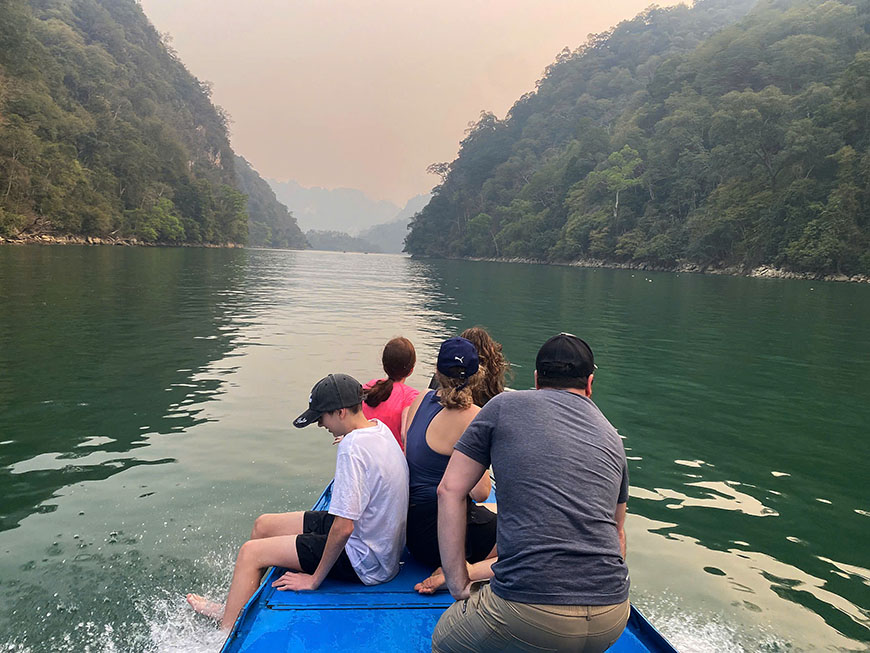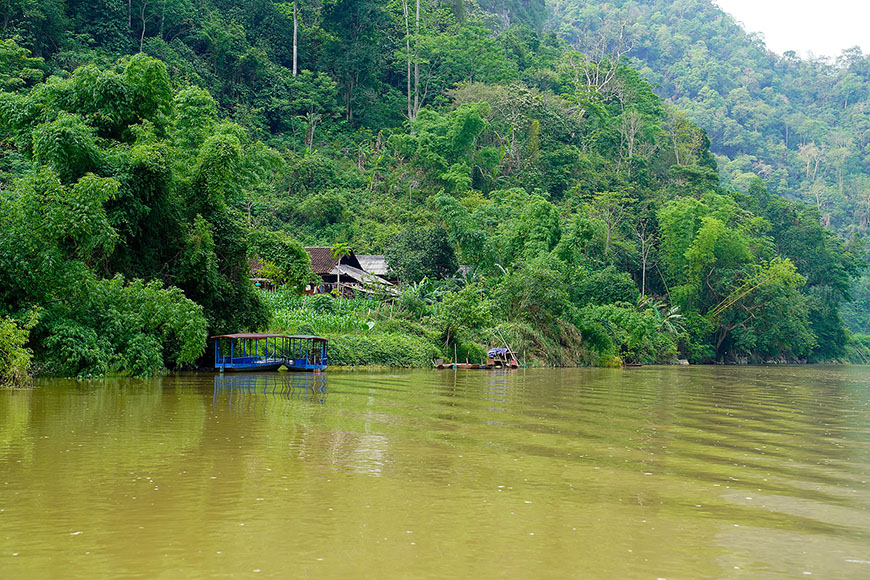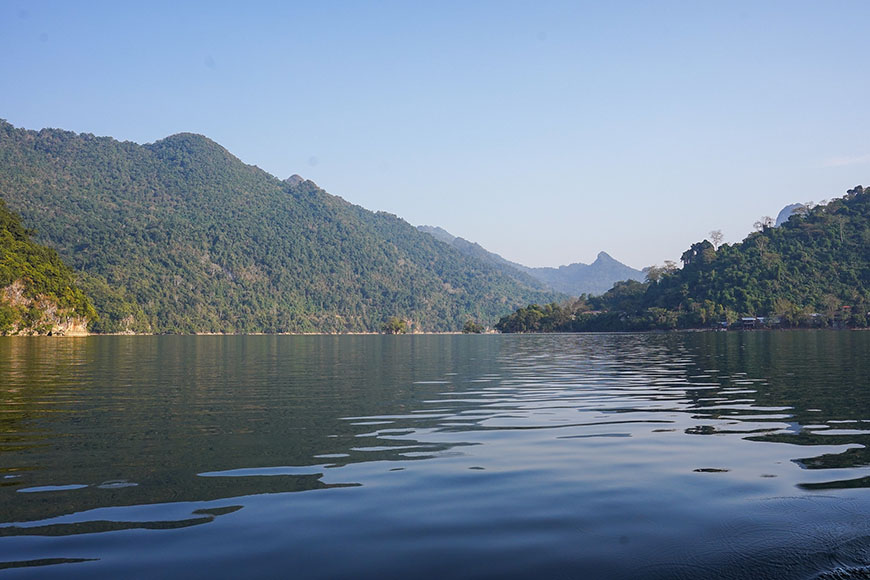The
Nang River offers visitors to
Ba Be National Park picturesque panoramas, where tropical forests and karst mountains line its banks. Its course crosses dense vegetation, highlighting its wild and preserved character. This landscape, of remarkable beauty, is the scene of millennial natural interactions that have shaped a living, unique, rich and fragile environment.
 Boat Trip on Nang River, best way to discover beauty of Ba Be National Park - Mr Linh's Adventures
Boat Trip on Nang River, best way to discover beauty of Ba Be National Park - Mr Linh's AdventuresBa Be National Park: A unique ecosystem
Ba Be National Park, in the heart of Vietnam, is intimately linked to an essential river network. Lake Ba Be, a freshwater expanse of major ecological importance, is its center. Fed by the Nang, Ta Han and Bo Lu rivers, this karst lake regulates the local microclimate and promotes rich biodiversity.
The rivers, sculpting the limestone formations, have created spectacular caves and waterfalls, such as the Dau Dang Falls, adding to the wild beauty of the landscape. These watercourses are home to a remarkable diversity of aquatic and terrestrial species, essential to the local fauna and flora.
Ba Be Lake : Heart of the river network
Ba Be Lake, the heart of this river system, extends over approximately 8 km long, with a maximum width of 2 km and an average depth of 20 to 25 meters. The largest natural freshwater lake in Vietnam, its area varies between 3 and 5 km² depending on the season. Known as "Slam Pé" (three lakes) in the Tay language, it consists of three distinct parts: Pe Leng, Pe Lu and Pe Lam. The Ta Han, Bo Lu and Cho Leng rivers flow into the lake from the south and west, while the Nang River borders it to the north. Underground rivers, crossing karst caves such as the
Tham Phay cave, connect the different watercourses. The Dau Dang waterfall, formed by the Nang River, is a highlight of the river network.
 The Nang River plays an essential role in the ecosystem of Ba Be National Park - Mr Linh's Adventures
The Nang River plays an essential role in the ecosystem of Ba Be National Park - Mr Linh's AdventuresFocus on the Nang river
The Nang River, originating in China, is a major hydrographic axis of the park. It converges with the Gam River, crosses the
Puong cave, descends the Dau Dang waterfall and flows into Ba Be Lake to the north. Its particular hydrological regime allows it to act as an emissary of the lake in dry season and as a tributary during floods in wet season, suggesting a mutual regulation of water levels. This link function is vital for the park’s ecology and its regional environment. In addition, the Nang River plays an essential role in the ecosystem of the Ba Be National Park, serving as a transport route and water source for the local population.
A boat trip on the river allows you to admire the emblematic landscapes of the park and to cross the cave of Puong, which houses an important colony of bats. Dau Dang waterfall is another major point of interest.
 Ba Be lake a precious and unique ecosystem - Mr Linh's Adventures
Ba Be lake a precious and unique ecosystem - Mr Linh's AdventuresA vital and threatened river ecosystem
The rivers of Ba Be National Park, notably the Nang River, support rich aquatic and riparian biodiversity. The Nang River, with its unique course through the Puong cave and the Dau Dang waterfall, and its role in the water balance of Lake Ba Be, is a key element of the park's ecosystem.
Human activities can impact these ecosystems, but conservation and protection measures are in place to mitigate these effects and preserve the water quality and biodiversity of the rivers. The sustainable management of the park, involving local communities and international collaborations, is essential to ensure the sustainability of these precious river ecosystems.
The river network of Ba Be National Park is an essential element of the ecosystem and natural heritage of Vietnam. It supports exceptional biodiversity, plays a vital role in the way of life of local communities and is a major tourist attraction. Its preservation requires concerted efforts to minimize human impact and protect this natural treasure for future generations.
The sustainable management of this river system is crucial for the preservation of the ecological balance of the park. The complex interactions between surface and underground waters, as well as their impact on the karst geomorphology, make Ba Be a valuable study site and an invaluable natural heritage.